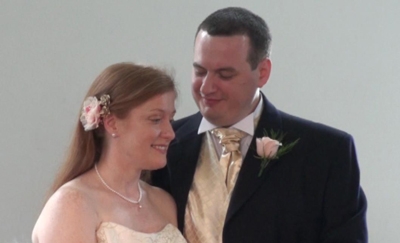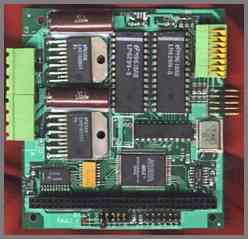ON Thursday, Claire Nolan, daughter of Ann and Pat Nolan of College Road married Mark Dennehy from Kerry in the Parade Tower of Kilkenny Castle, in a civil ceremony, surrounded by family and friends.They say that every little girl dreams of getting married like a princess, but until recently if you did not want to marry in a church, you had no choice but to make your vows in a registry office. In Kilkenny that was inside the Health Service Executive building at Lacken, which, at least had some lawn and trees outside, unlike some other counties which had very unromantic settings indeed.Since 2004, the registrar may perform a marriage outside of a registry office. There are conditions, however, and Ann Boyle, the registrar in Kilkenny says that they all make perfect sense considering existing regulations and our climate. The place must be public, in good repair and a solid structure, so no marquees in the garden and no beaches or mountaintops are allowed. It must be a dignified venue with no connection to any religion. There must be room for the guests to sit comfortably and access for those with physical disability.Claire Nolan arrived with her father by car to the Parade Tower. Staff at the castle, Frank Kavanagh and Anne Teehan were on hand to usher her into the lift to the second floor where there ceremony took place in front of waiting guests.Afterwards the celebration was in the Ormonde Hotel and the destination for the honeymoon, well, that was a secret.All at 32.ie wish the happy couple well in their future together.
Monthly Archives: July 2010
31
Jul 10
Married!
20
Jul 10
My interviews at Google
 So I’ve now completed the interview process twice with Google (once in 2007 and once in 2010), and while I’m not sure advice from someone not hired after two run-throughs is all that useful, I figured that the more information out there for those undergoing pre-Google-Interview stress, the better, so here’s how it went.
So I’ve now completed the interview process twice with Google (once in 2007 and once in 2010), and while I’m not sure advice from someone not hired after two run-throughs is all that useful, I figured that the more information out there for those undergoing pre-Google-Interview stress, the better, so here’s how it went.
In both cases, I was contacted out of the blue by a Google recruiter. The first time I had been considering looking for a new role and pursued it immediately; the second time I hadn’t been and put off the recruitment process for several months, during which the same recruiter contacted me again twice to follow up. If nothing else, that’s a nice ego boost, but a more cynical mind might be considering the shotgun approach to a narrow recruiting filter and commissions 😀
First, a quick data point, I was applying for an SRE(SA) position on both occasions – Site Reliability Engineer (System Administration), because in most of my roles to date, I’ve been doing both sysadmin and development work and I’ve never seemed to drift towards one pigeonhole or another. SRE(SA) seemed optimal – interesting sysadmin work on large-scale systems and quite a bit of tool-writing to boot. This was decided on between myself and the recruiter, based on the self-assessment form you are given to fill out. I would love to know how they get around illusory superiority and the Dunning-Kruger effect with those forms, especially given the wierd bias they’d have in the dataset from having so many of the best in their fields working there.
Both times, the process proceeded in the same way: Continue reading →
07
Jul 10
andi-servo
As I mentioned in my last post, part of building Dagda required me to write a linux device driver for the Ajeco ANDI-SERVO motion control board:
After only eleven years, I finally got round to releasing the code for that driver under the MIT licence using Google Code project hosting.
How much use it would be to anyone is up for debate – the current version of the ANDI-SERVO is still in production, but differs from the model I developed on; the driver was written for Linux 2.0.35 and hasn’t been updated; and it’s pretty basic at that. Still, better out there than thrown away 🙂
The board itself is described in this datasheet; the main chip at it’s core, the actual device the driver is controlling, is described in this datasheet, this programming guide, and this user guide. Those, and the first edition of Alessandro Rubini’s excellent book Linux Device Drivers, were the main references for writing the driver.
The documentation I wrote for this was actually in LaTeX because I was still learning it at the time, but here’s the pdf it translated into. There’s only four pages, but they cover the structure and basics of the driver and the code’s simple enough to follow.
Speaking of code, it’s in a mercurial repository. You can browse it on the Google Code project webpage or clone it with hg like so:
[stextbox id=”info” image=”null”]
hg clone https://andi-servo.googlecode.com/hg/ andi-servo
[/stextbox]
Enjoy, and I hope someone finds it useful…



